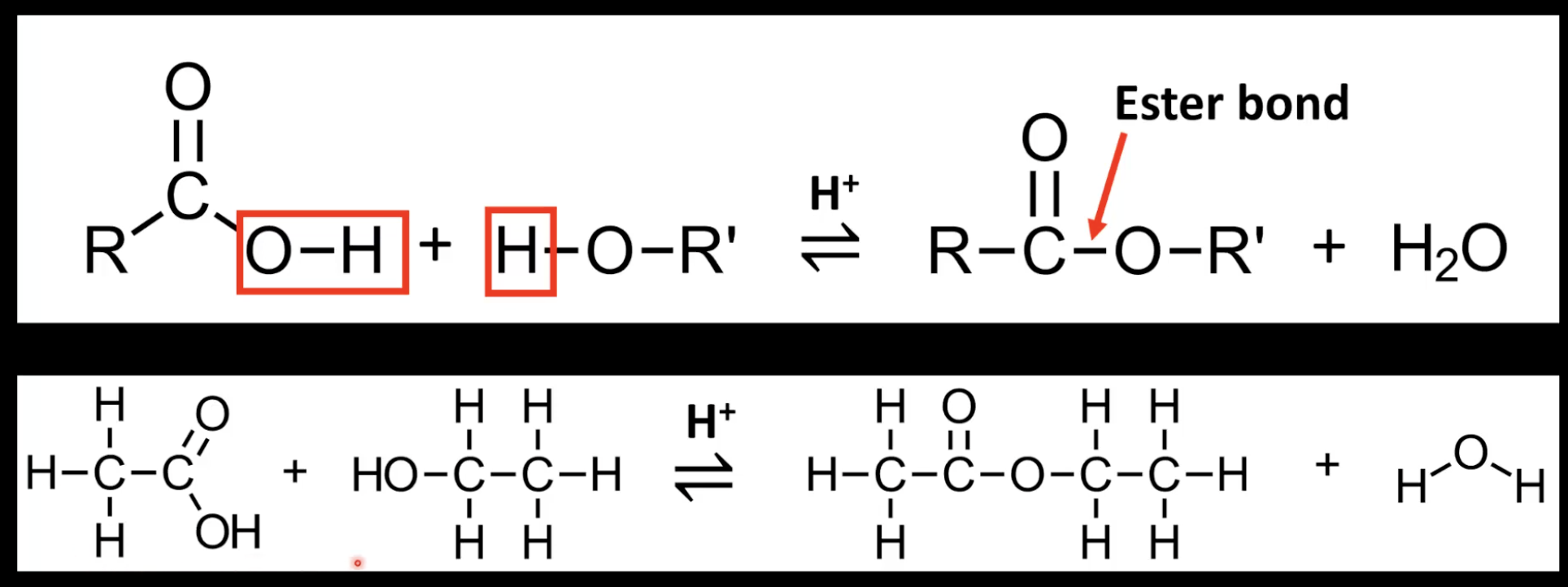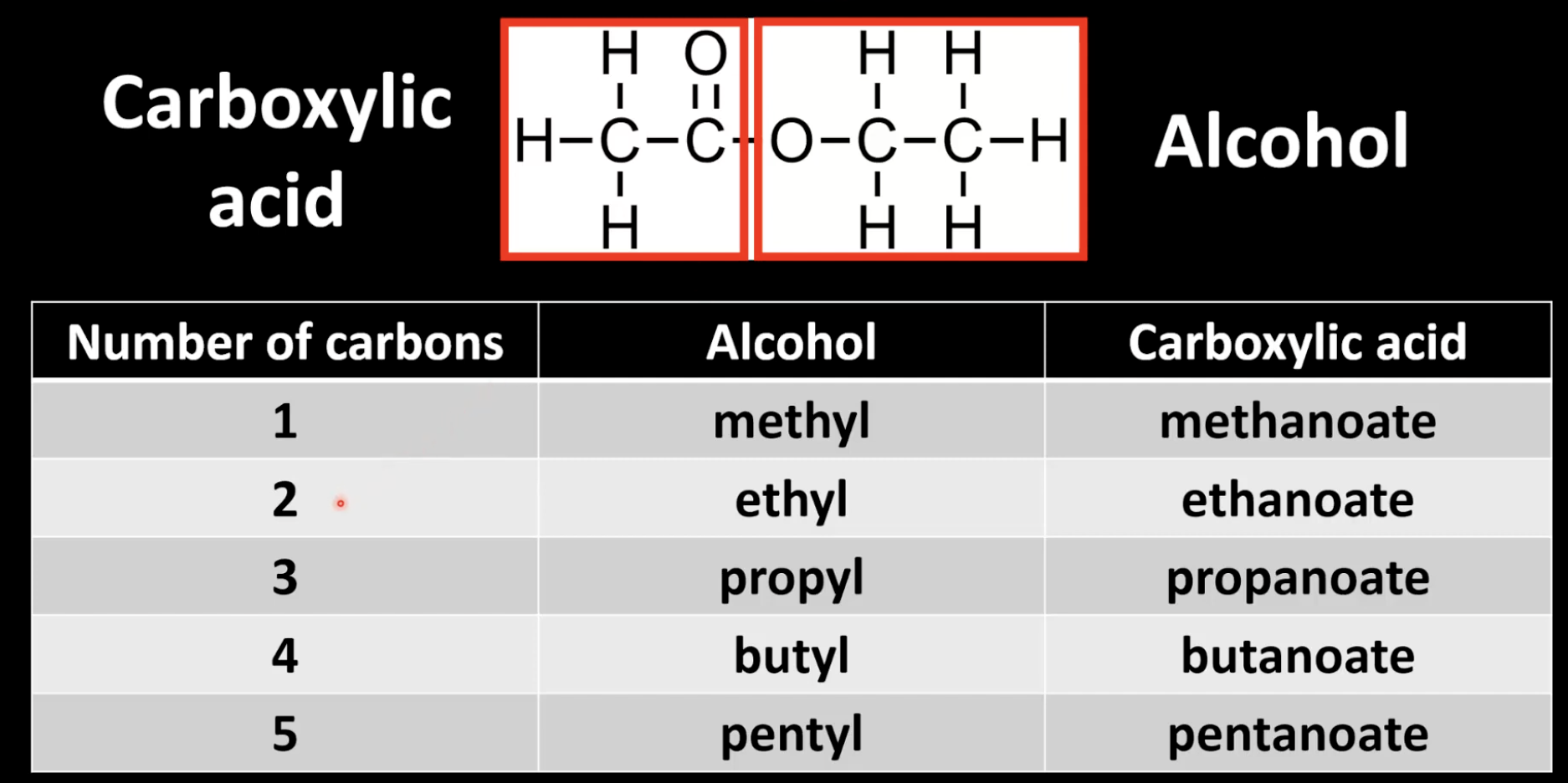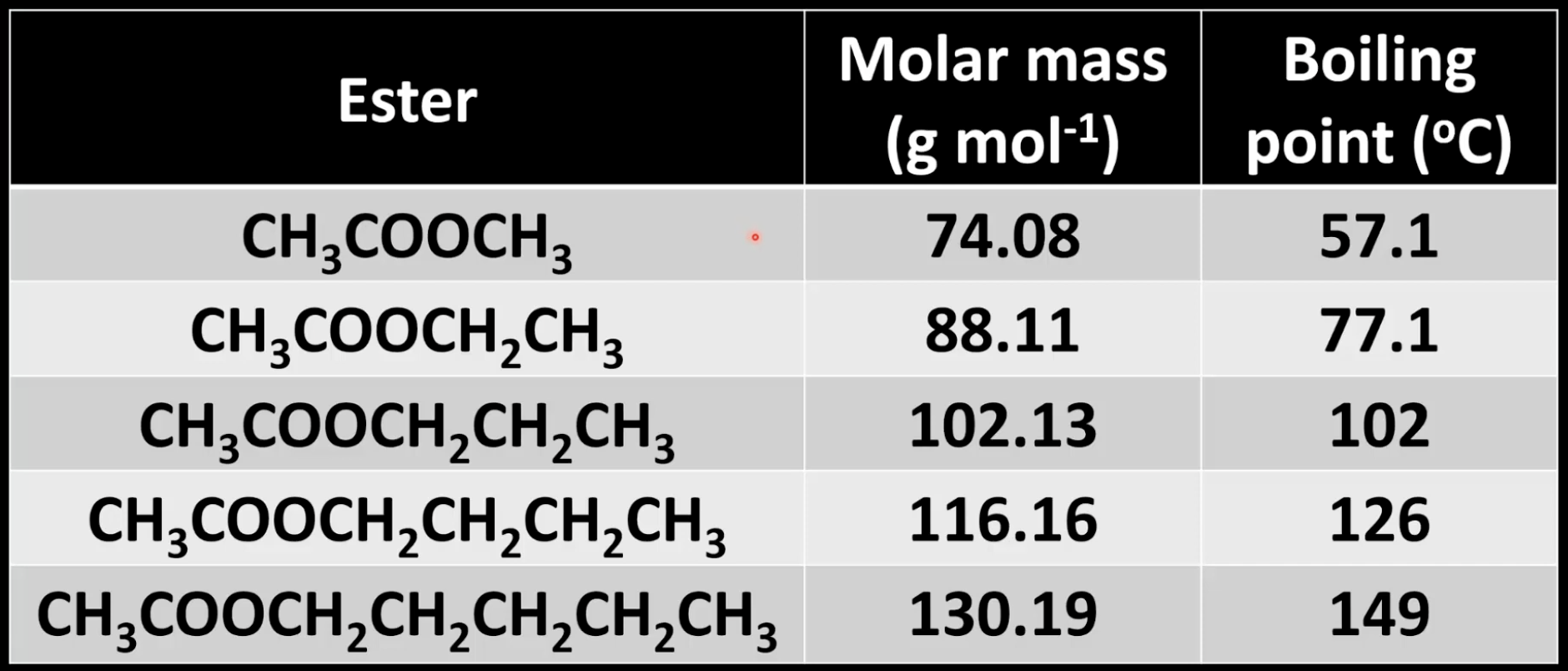S3.2.2 Esters
0.0(0)
0.0(0)
Card Sorting
1/5
There's no tags or description
Looks like no tags are added yet.
Study Analytics
Name | Mastery | Learn | Test | Matching | Spaced |
|---|
No study sessions yet.
6 Terms
1
New cards
How are esters formed?
Carboxylic acid + alcohol → ester + water.
Reaction is condensation (or esterification), catalyzed by H₂SO₄.

2
New cards
What type of reaction forms esters?
Nucleophilic substitution/condensation.
Water is formed.
Reversible reaction.

3
New cards
Naming esters
Alcohol part first (e.g. ethyl), acid part second (e.g. ethanoate).
Example: ethyl ethanoate.

4
New cards
Boiling point trend in esters
Increases with molar mass due to stronger London dispersion forces.
Example: methyl ethanoate < pentyl ethanoate.

5
New cards
Solubility of esters
Decreases with molar mass.
Larger hydrocarbon chains reduce solubility in water.
6
New cards
Uses of esters
Used as food flavorings, solvents, and plasticizers.
Fruity smells make them ideal for fragrances.